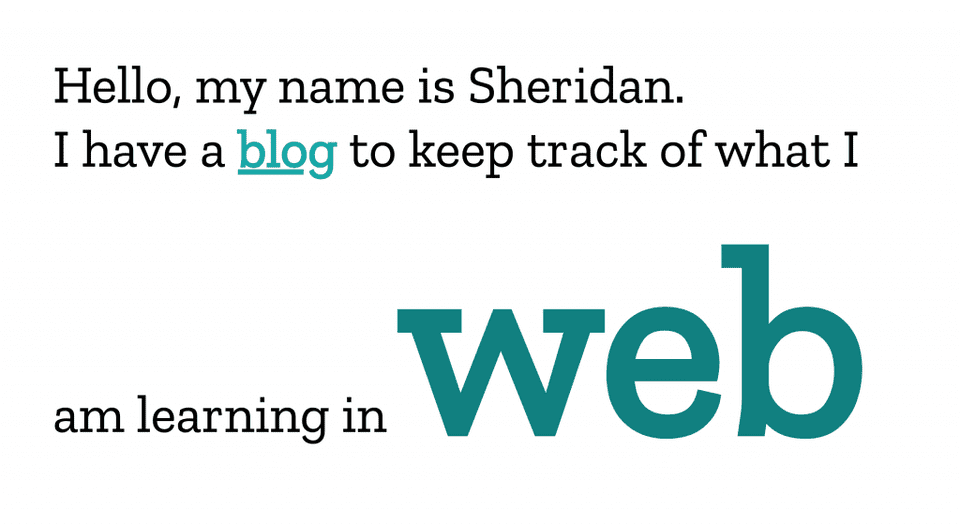I am always trying to write cleaner code (although I realize I didn’t always have this philosophy when I look at some of my older projects). Learning about CSS architecture makes me feel one step closer to achieving that goal. After reading about naming conventions in BEM, I decided to test drive my newfound knowledge by creating a simple landing page for my website.
mcksheridan.com landing page concept
The concept was minimalist: a quick paragraph to point visitors to this blog and links to my social media accounts. I made the text larger, changed a few colors, and added responsive styles for visitors on smaller screens. For the most part, I found creating stylesheets with BEM to be a straightforward experience.
My design felt a bit too minimalist, so I decided to indicate that “web development” was a keyword by changing both its font weight and color of the words. The words “web development” were contained within a <p> tag in a <div> tag with a class of .content. According to the standards established by BEM, this text could be in a <b> tag with a class of .content--blue (or some other modifier in place of blue).
Revised mcksheridan.com landing page
I discovered an error in my stylesheet after reviewing the BEM documentation. In addition to the modifier (.content--blue), I would also need to add the block (or element) to the class as well. I changed .content--blue to content content--blue and retained my original stylesheet. This resulted in the relative font size I was using in the .content class increasing again for everything in the .content--blue class.
Error on the mcksheridan.com landing page
I initially fixed this issue by setting the font size for the .content--blue to “inherit”, but adding extra code seemed counterintuitive. I reviewed the style for the .content block and decided that there must be a way to solve this issue by using a different unit of measurement for the font size in .content. Previously, .content--blue inherited its font size from .content, but now the “web development” text both inherited the font size from .content and had it reapplied as part of its own class. This caused the text to appear at 5em of 5em, or 25em relative to the root.
I solved the problem by changing the unit of measurement for the font size in .content from em to rem. By measuring from the root of the document, I did not run the risk of the font size increasing due to the font size of its parent block (or parent element). I look forward to working with BEM again—with different relative units.


